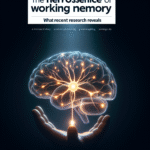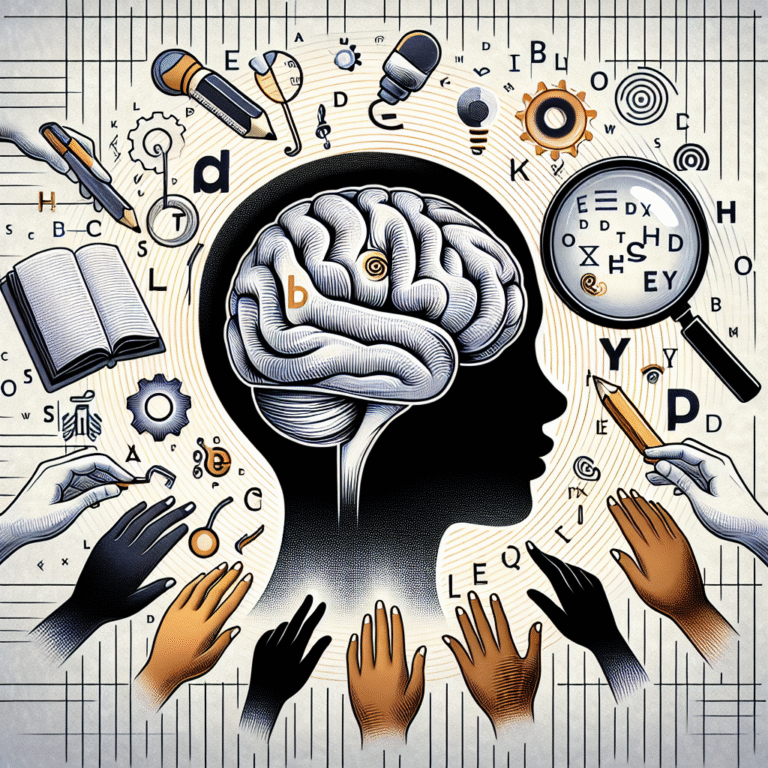
Memory Matters: Essential Strategies for Supporting Students with Learning Disabilities
Introduction
Memory is the backbone of learning. For students with learning disabilities, however, memory can often be a challenging hurdle that can impede their academic growth. The emotional and cognitive toll can be substantial, affecting their confidence and willingness to engage in the learning process. Understanding how memory plays a crucial role in education is vital for teachers, parents, and educational institutions that aim to create inclusive environments.
In this comprehensive guide titled Memory Matters: Essential Strategies for Supporting Students with Learning Disabilities, we delve into effective strategies that can empower both students and educators. We will explore practical approaches, share compelling case studies, and provide actionable insights designed to elevate the learning experience for every student, regardless of their challenges. By focusing on memory, specifically tailored strategies can unlock potential and foster an enriching educational journey.
Understanding Learning Disabilities and Memory
What are Learning Disabilities?
Learning disabilities are neurological conditions that affect how people receive, process, or express information. Common types include dyslexia, dyscalculia, and ADHD. These challenges can create significant barriers in a traditional learning environment, where a singular approach to education may not suffice.
The Role of Memory
Memory encompasses a range of different processes, including working memory, long-term memory, and retrieval. For students with learning disabilities, deficits in any of these areas can lead to difficulties in learning new information, completing assignments, or retaining knowledge for exams. Recognizing this interplay is the first step in providing the right support.
Case Study 1: James and the Power of Multisensory Learning
James, a 10-year-old with dyslexia, struggled to make sense of written language. Traditional phonics instruction left him frustrated and disengaged. By adopting a multisensory approach—integrating visual, auditory, and kinesthetic learning strategies—his teacher was able to enhance James’ memory retention. Using colored letters, tactile experiences, and rhythmic patterns, they created an engaging atmosphere that empowered James to read more confidently.
Analysis: This case study underscores the importance of adapting teaching methods to match the unique memory needs of students with learning disabilities. Multisensory learning enhances memory by creating deeper neural connections.
Memory Matters: Key Strategies for Supporting Students
1. Utilize Visual Aids
Visual aids can be powerful tools in enhancing memory recall. Charts, diagrams, and infographics help break down complex information, making it easier to retain.
Table 1: Types of Visual Aids and Their Uses
| Type | Purpose | Example |
|---|---|---|
| Graphic Organizers | Organizing information visually | Mind maps |
| Charts | Simplifying complex information | Flow charts |
| Images | Reinforcing concepts | Photographs |
2. Incorporate Technology
Many digital tools exist that can assist students with learning disabilities in increasing their memory capacity. Applications like Evernote and Quizlet allow students to organize notes and create interactive study materials.
3. Implement Memory Techniques
Teaching memory techniques, such as mnemonic devices or memory palaces, can significantly aid in information retention. These strategies convert information into memorable images or associations.
Case Study 2: Sarah’s Journey Through Mnemonics
Sarah, a high school student with ADHD, often found it hard to remember historical dates for her exams. By introducing her to mnemonic techniques, her history grades improved dramatically. She created simple phrases, like "Columbus sailed the ocean blue in 1492," to help lock dates in her memory.
Analysis: This example illustrates how simple mnemonic strategies can facilitate improved memory retention, showcasing the versatility of learning aids tailored to individual needs.
4. Foster a Supportive Learning Environment
Creating a safe space for students to express their difficulties encourages them to take risks in their learning. Positive reinforcement and understanding can work wonders in bolstering their confidence and memory retention.
5. Break Information into Manageable Chunks
Chunking information reduces cognitive overload, making it easier for students to process and remember what they’ve learned. This strategy is especially useful for complex subjects or lengthy texts.
Chart 2: Chunking Example
| Topic | Chunked Information |
|---|---|
| U.S. History | Revolutionary War: Causes, Events, Outcomes |
| Math | Algebra: Operations, Equations, Graphs |
Memory Matters in Practice: Techniques to Enhance Retention
6. Regular Review Sessions
Frequent review ensures that information moves from short-term to long-term memory. Scheduled review sessions can make a world of difference.
7. Use Storytelling as a Learning Tool
Stories can enhance memory by providing context and emotional connection to the material. Incorporating narrative into lessons can help cement concepts in students’ minds.
8. Encourage Self-Regulated Learning
Teaching students to be aware of their learning processes empowers them to apply effective memory strategies independently. This involves setting learning goals and monitoring their progress.
Conclusion
The road to effective memory recall and improved learning experiences for students with learning disabilities isn’t always straightforward. However, by implementing the strategies discussed in Memory Matters: Essential Strategies for Supporting Students with Learning Disabilities, educators and parents can create supportive environments tailored to meet students’ unique needs. By being flexible, incorporating technology, and fostering self-regulated learning, we can transform challenges into opportunities for growth.
As we move forward in advocating for students with learning disabilities, let’s embrace the understanding that memory matters—and so do our students. Every step taken in understanding and applying these concepts paves the way for unparalleled success in their educational journey.
FAQs
1. What are some common learning disabilities?
Common learning disabilities include dyslexia (reading difficulties), dyscalculia (math difficulties), ADHD (attention deficits), and dysgraphia (writing difficulties).
2. How can memory techniques benefit students with learning disabilities?
Memory techniques simplify and organize information, making it easier for students to retain and recall what they’ve learned.
3. Is technology effective for aiding learning disabilities?
Yes, technology can provide a range of resources, such as apps and tools, that facilitate organization and engagement, enhancing memory retention.
4. What role do parents play in supporting their children?
Parents can reinforce classroom learning at home by providing a structured and supportive environment, as well as advocating for appropriate accommodations.
5. Can learning disabilities improve over time?
Many students with learning disabilities can make significant gains through targeted interventions, strategies, and support, moving towards improved academic performance.
By incorporating these insights and strategies, we aim to empower educators, parents, and students alike. Understanding that memory matters is the first step to fostering an environment where every student can thrive, learn, and succeed.
















